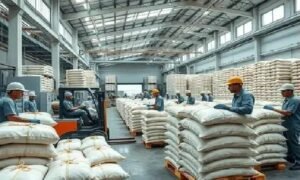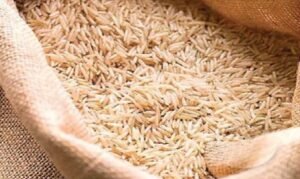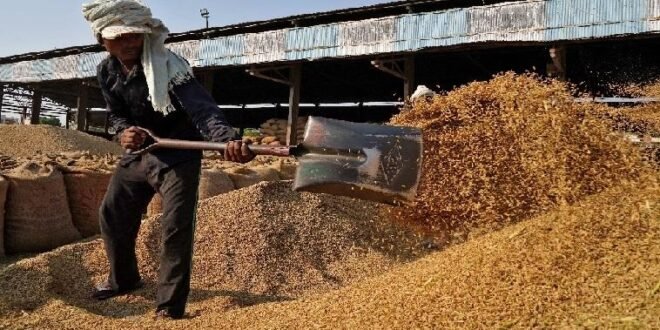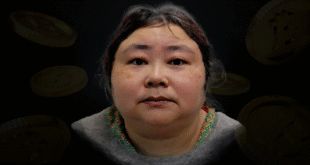08-10-2025
Bureau Report
NEW DELHI: India’s move to allow export of de-oiled rice bran effective Oct. 3 is aimed at stabilizing local DORB prices and boosting Indian exports, traders and millers told media.
 The Ministry of Commerce & Industry announced the policy in an Oct. 3 notice, which said exports of the product are “hereby amended from ‘Prohibited’ to ‘Free’ with immediate effect.”
The Ministry of Commerce & Industry announced the policy in an Oct. 3 notice, which said exports of the product are “hereby amended from ‘Prohibited’ to ‘Free’ with immediate effect.”
DORB is used for animal feed and extracted from grains and seeds, including solvent (de-fatted).
India banned its export in July 2023 to control high domestic animal feed costs. The policy shift comes amid India sitting on a record rice inventory ahead of a bumper crop harvest. As of September, India’s central rice stockpiles hold 36.906 million metric tons of milled rice and 16.902 million MT of un-milled paddy, according to Food Corporation of India data. This is against the buffer stock norms of 10.25 million MT as of October.
Meanwhile, India is expected to export 25 million MT of rice in 2025-26, up 1 million mt year over year, and 151 million MT of milled rice, also up 1 million MT year over year, according to US Department of Agriculture data.
“There’s so much surplus of grains currently in India, which is why feed prices have been coming down. Allowing exports of DORB will stabilize local DORB prices, while positively impacting local milled rice prices as DORB is a byproduct of rice milling,” said Mukesh Jain, president of the Rice Exporters Association of Chhattisgarh.
“Currently, the millers are going through financial losses, facing bearish market for DORB and milled rice both. Once DORB prices are stable due to exports, it will improve conditions for millers,” he added.
India produces 6%-7% of DORB from milling 100 kg of rice, according to Jain, and the domestic market in central India consumes DORB with 10% fiber. He believes high-fiber DORB can now be exported.
 A Benin-based trader said that opening DORB exports is a positive sentiment for millers, while a Kakinada-based exporter/miller said it is good news for Indian trade.
A Benin-based trader said that opening DORB exports is a positive sentiment for millers, while a Kakinada-based exporter/miller said it is good news for Indian trade.
The policy change comes against the backdrop of declining Indian rice prices, with Media assessing India 5% white rice down by $11/MT month over month to $359/MT FOB Oct. 3.
“Rice bran is usually purchased by the solvent industry. Due to ban on DORB, the industry was not able to sell solvent byproducts. Since they faced losses, they were reducing rice bran costs, which was affecting mills. Now DORB will be exported to destinations like Vietnam, so through byproduct linkage, rice prices can stabilize locally,” another Kakinada-based miller/exporter said.
Current DORB prices are about Rupee 11,000/MT ($124/MT), which is likely to rise to Rupee 13,000/mt, according to Jain.
Indian market participants welcomed the policy change as new paddy crop is likely to hit the market by end-October to November.
Prices of de-oiled rice bran have fallen by half since July 2023 to about 10,000 Indian rupees ($113) per ton, according to the Solvent Extractors’ Association of India (SEA).
B.V. Mehta, executive director of the SEA, said exports would benefit the rice milling and solvent extraction industry, particularly in eastern India, while helping farmers and processors gain better value from rice bran by-products.
India is the world’s largest importer of vegetable oils, including palm oil, soyoil and sunflower oil, sourcing them from countries such as Malaysia, Indonesia, Argentina, Russia and Ukraine.
 Pressmediaofindia
Pressmediaofindia




